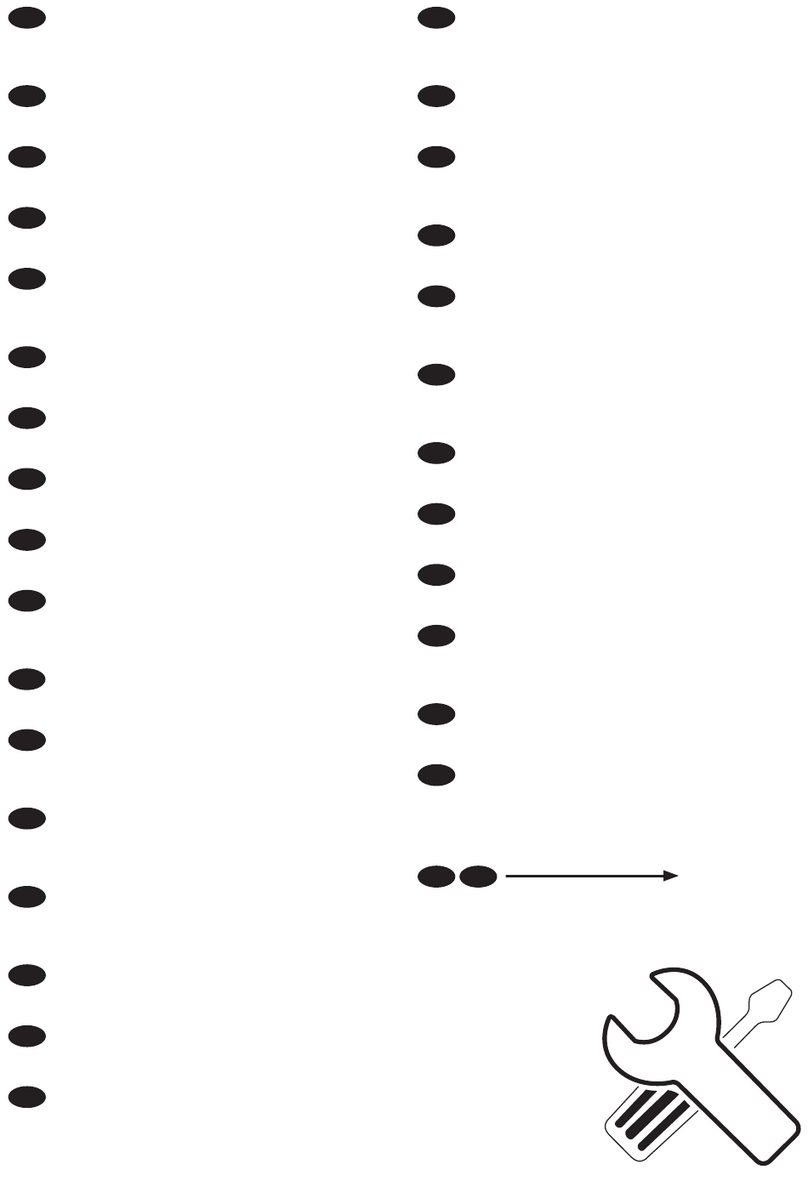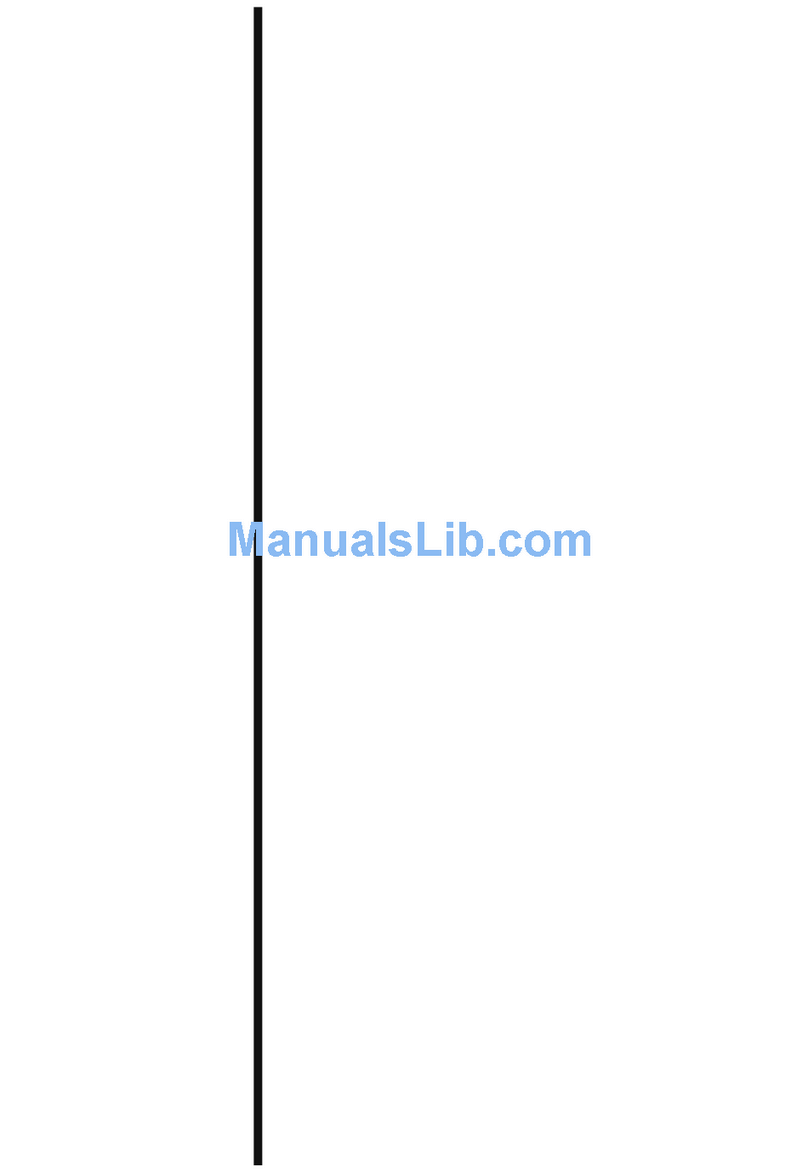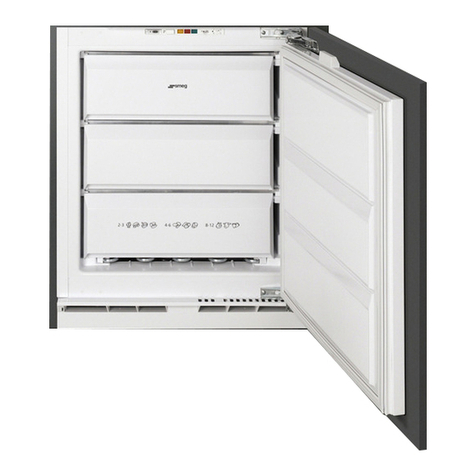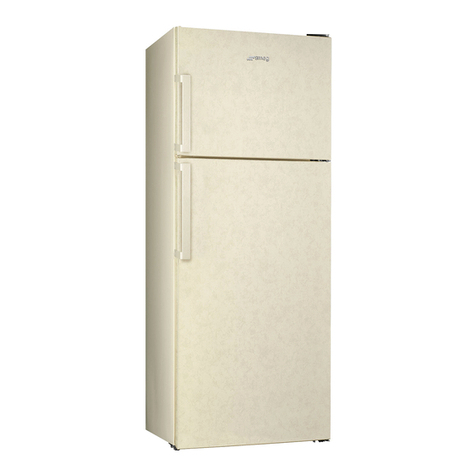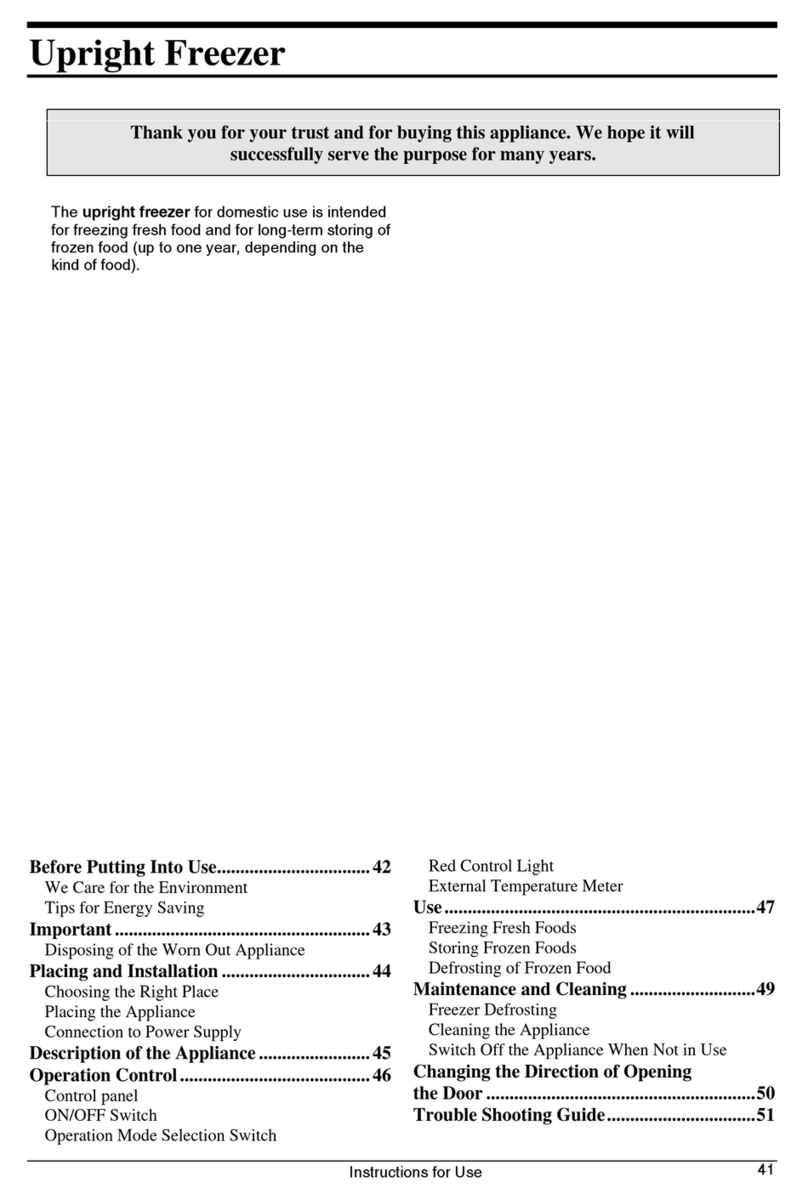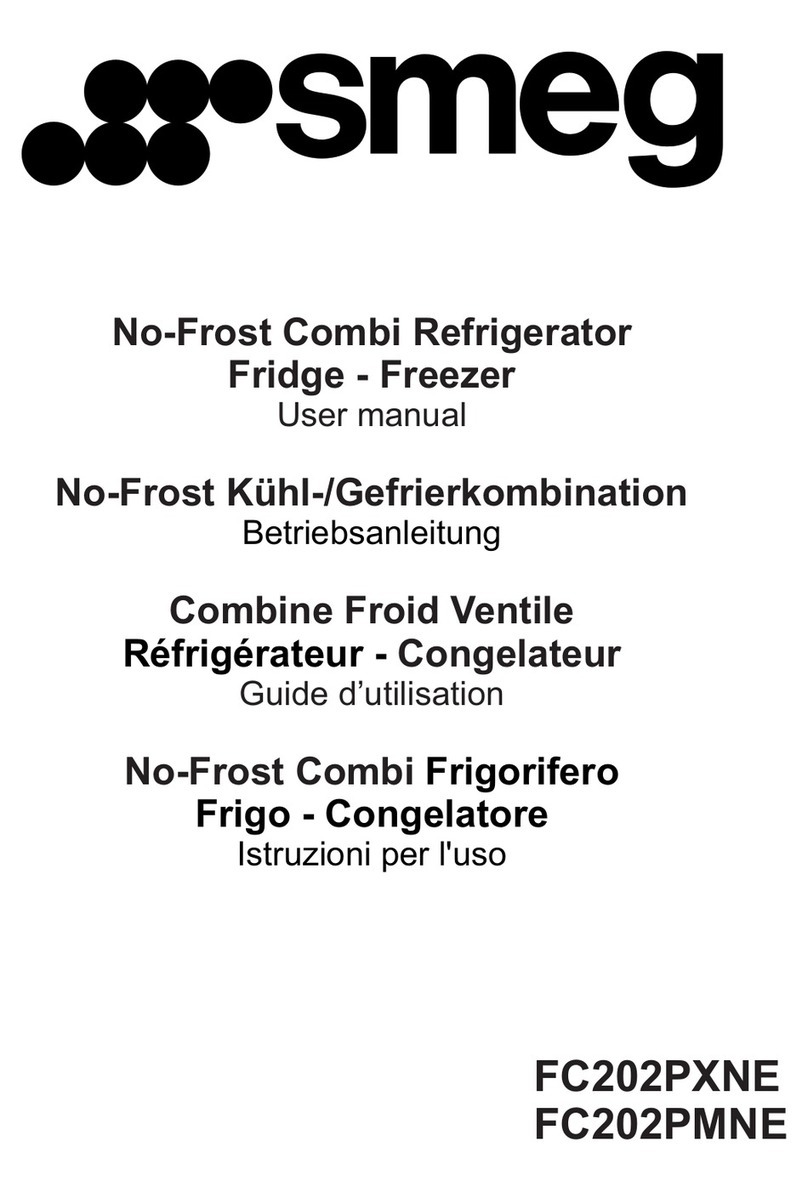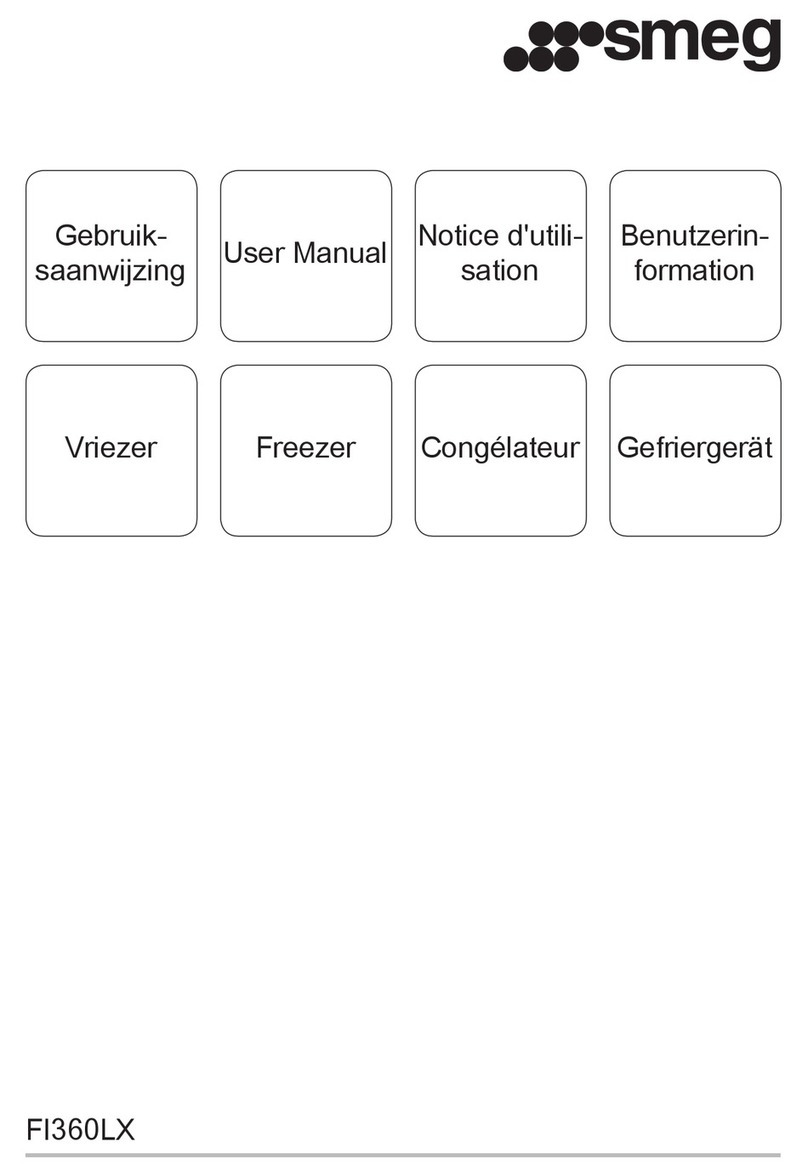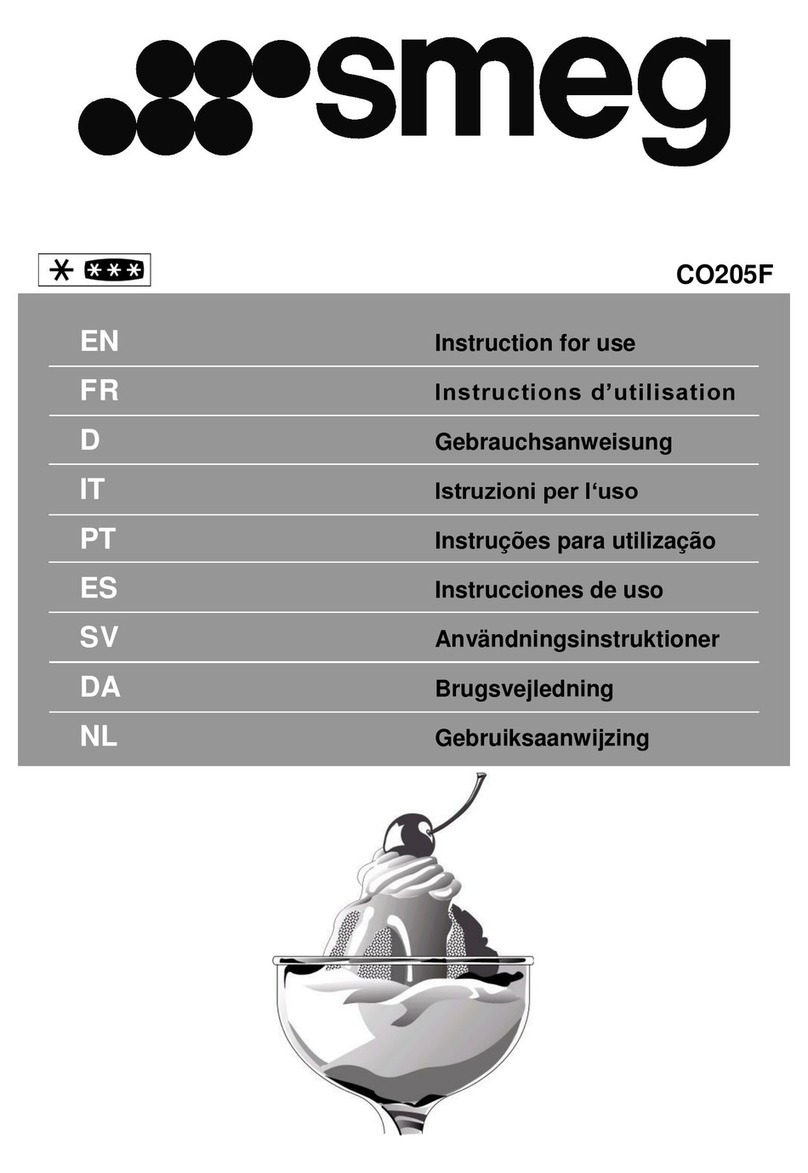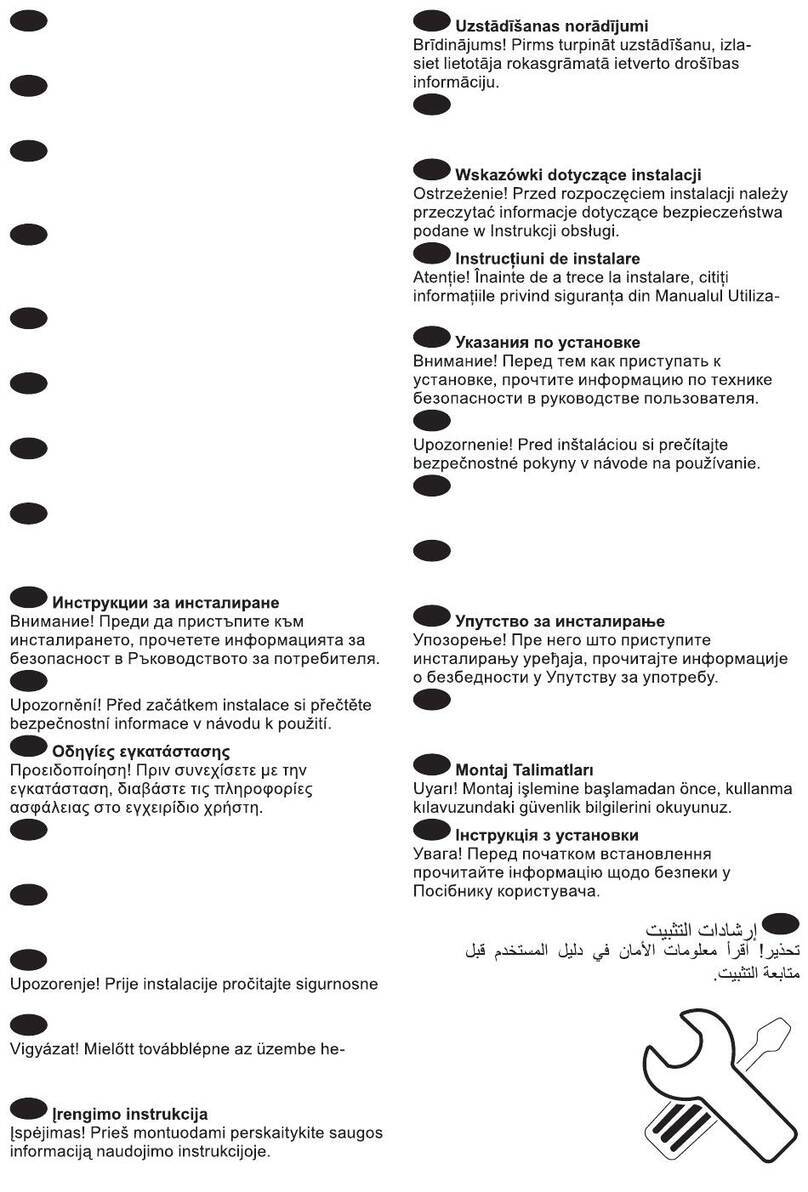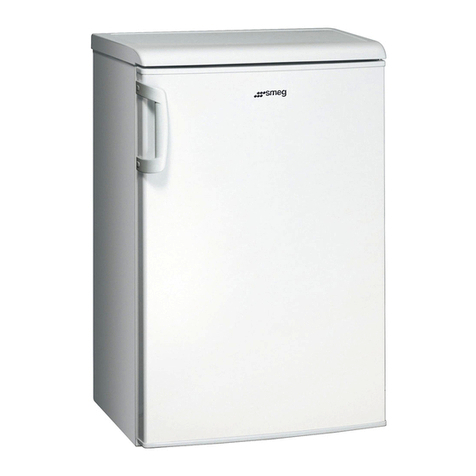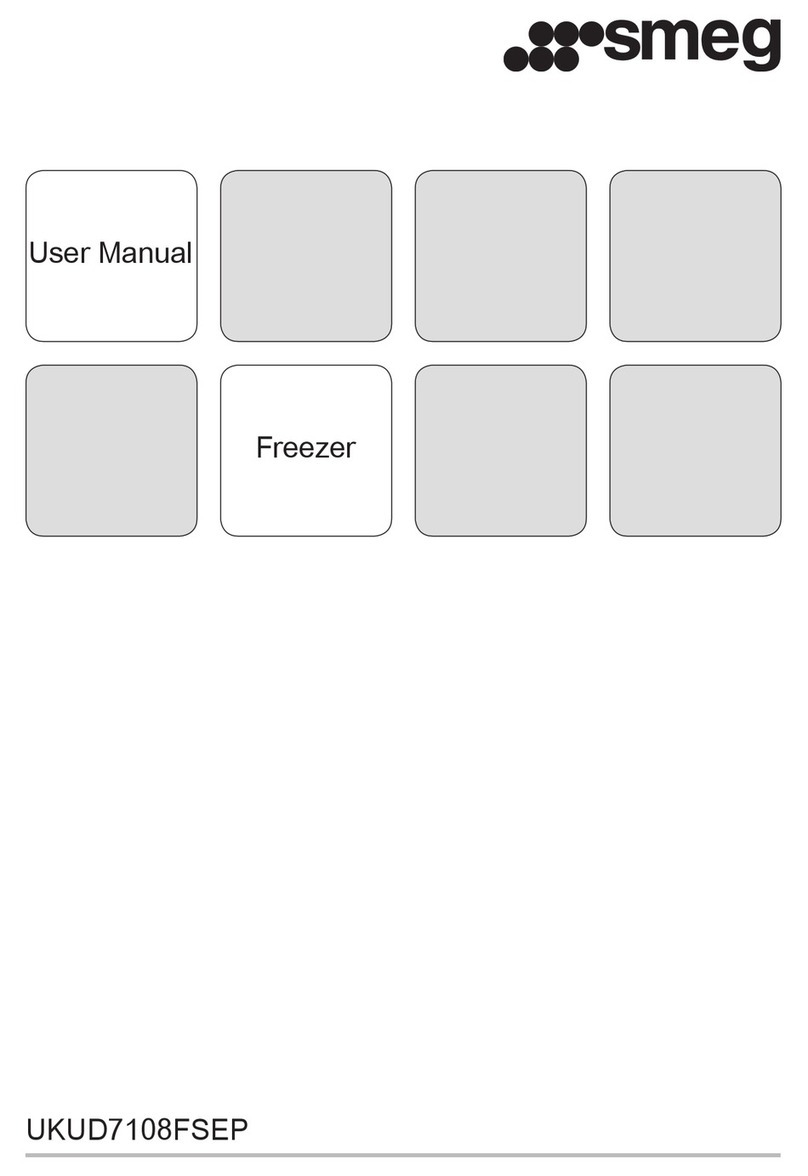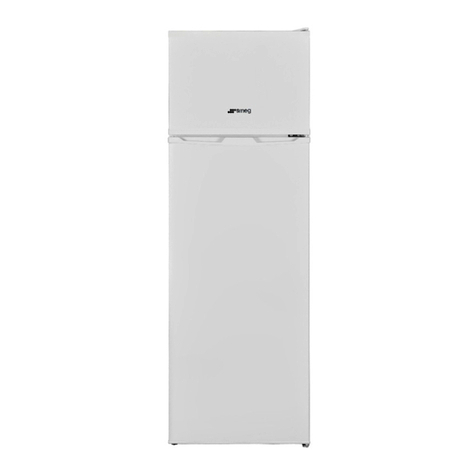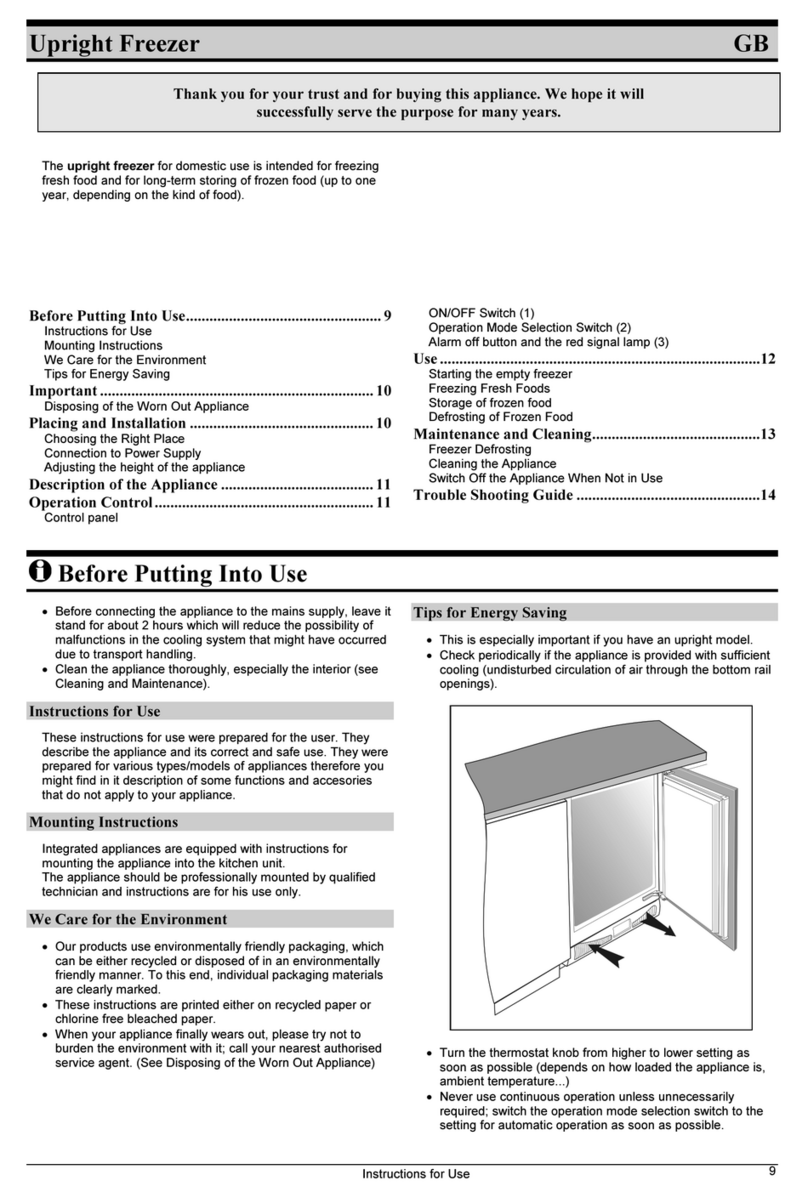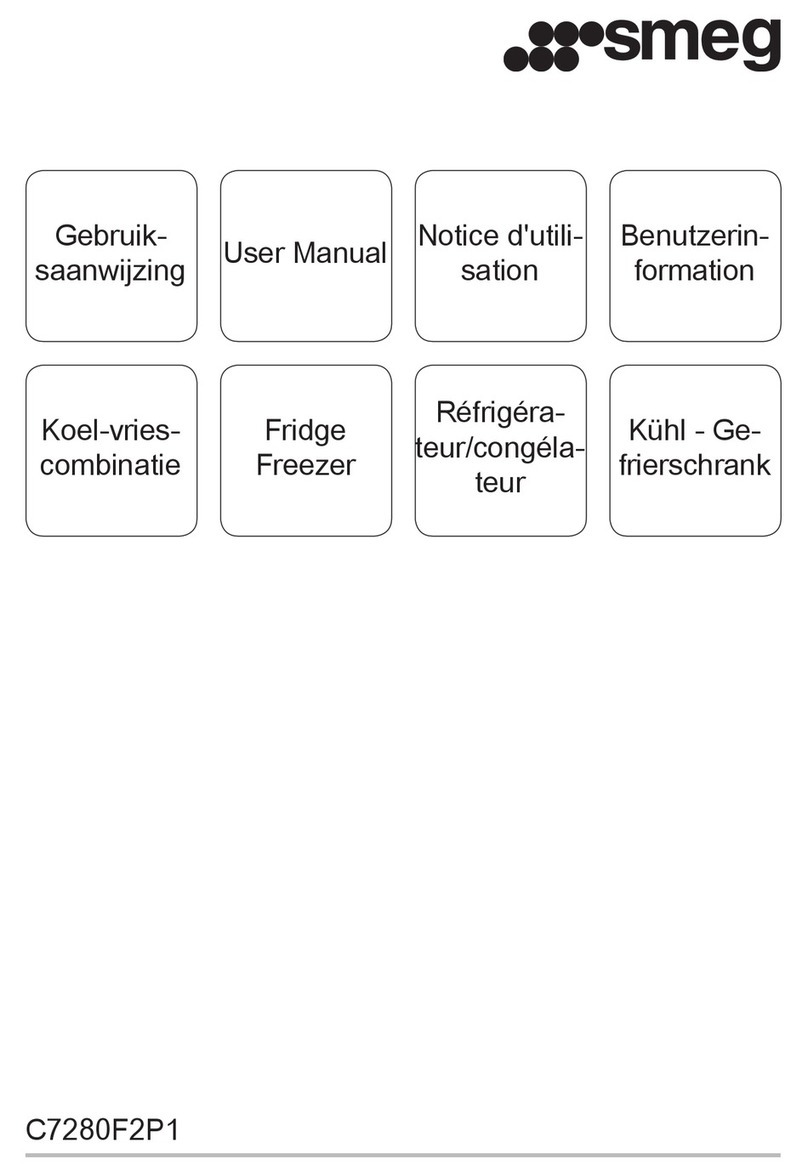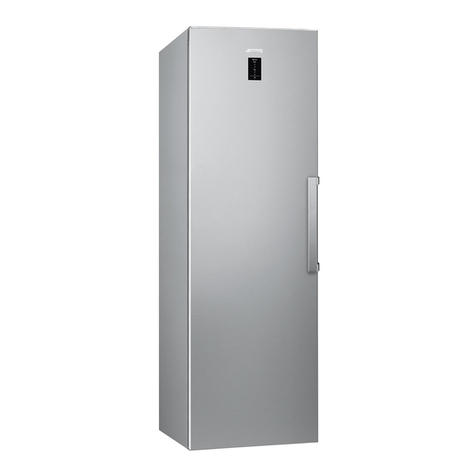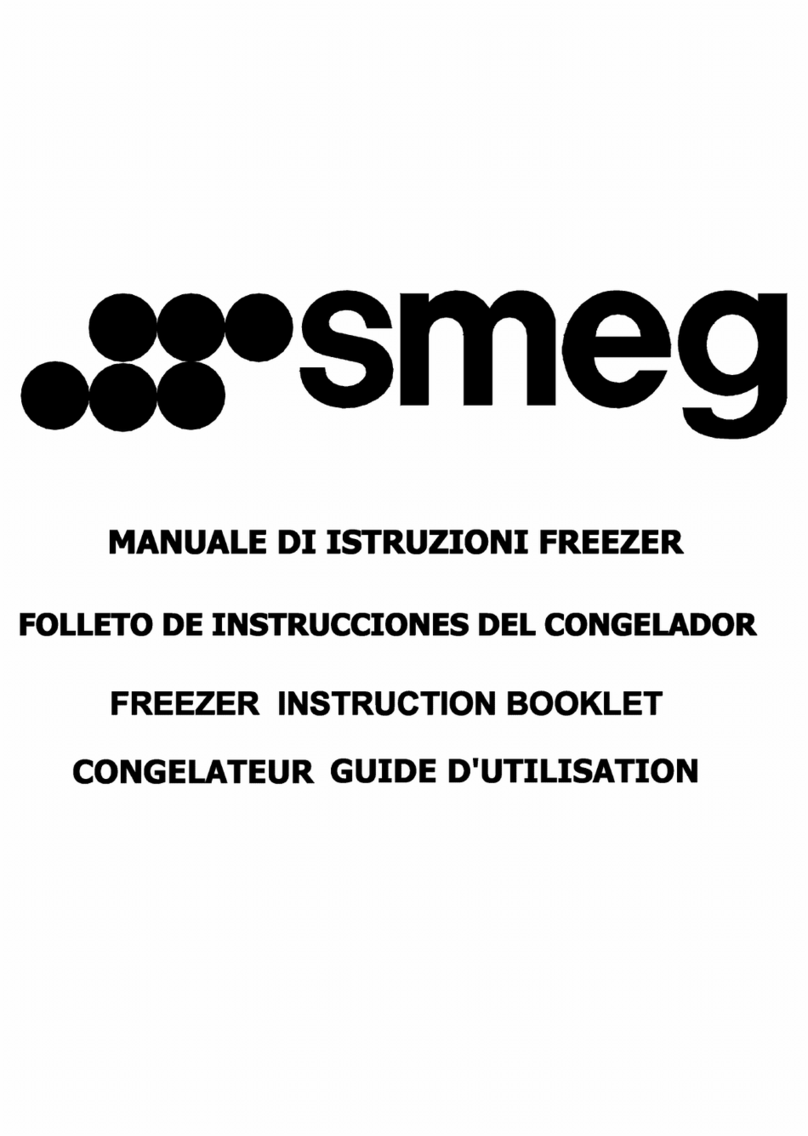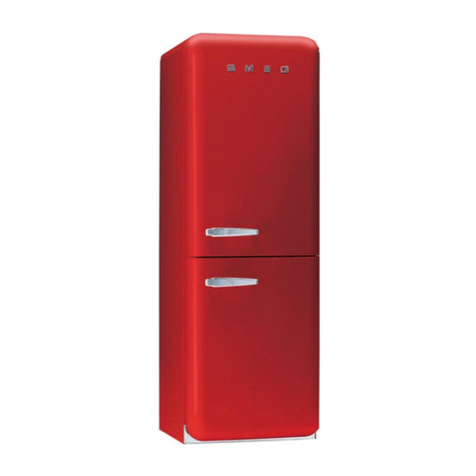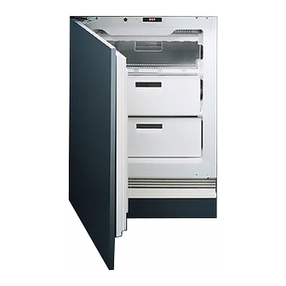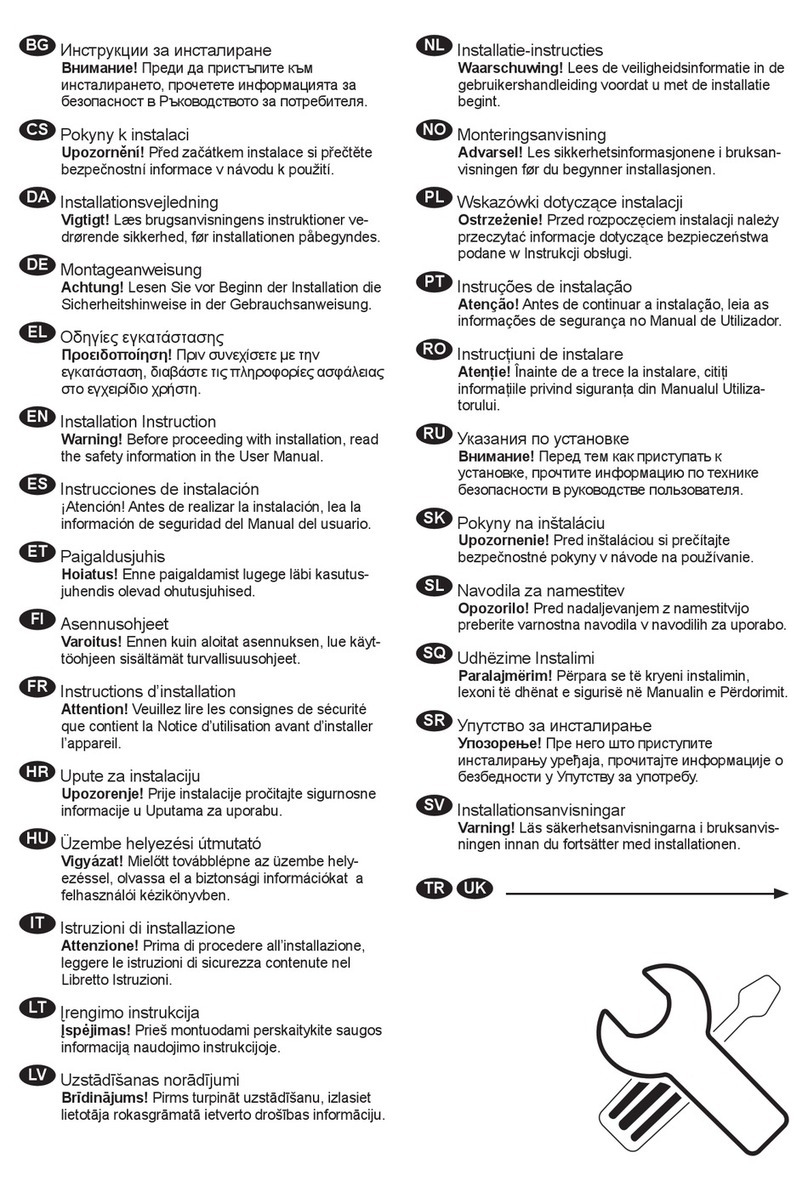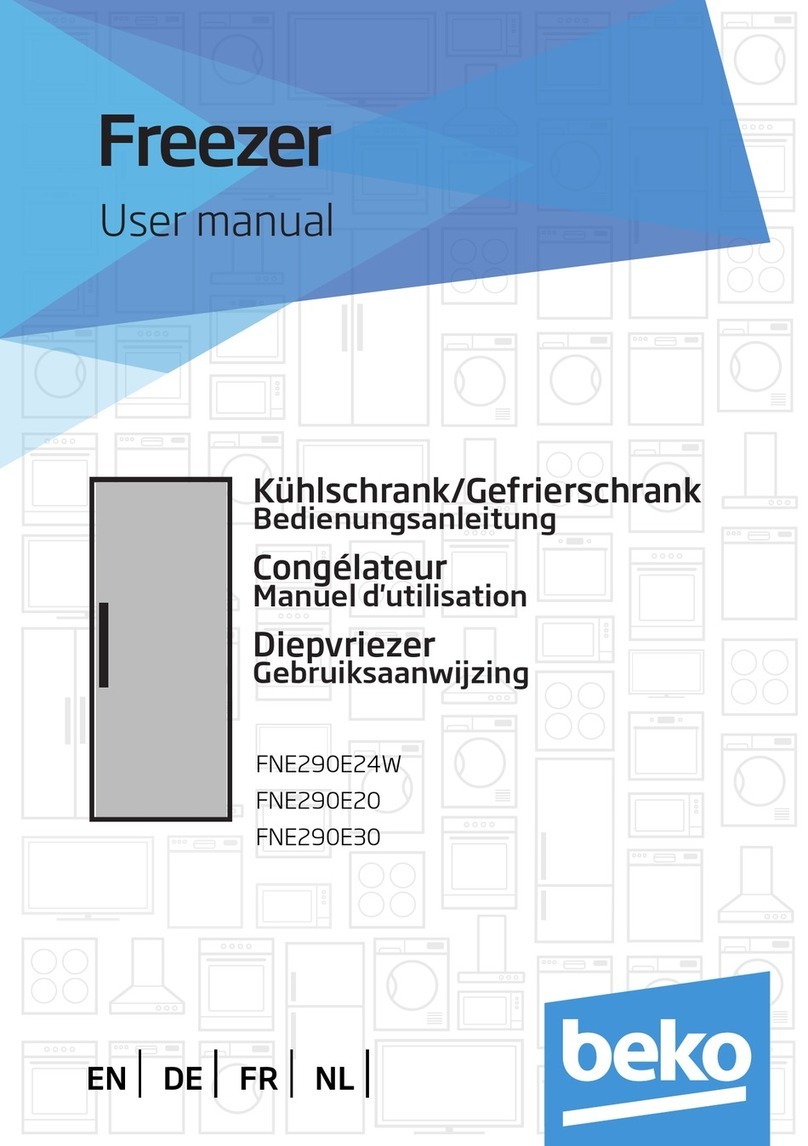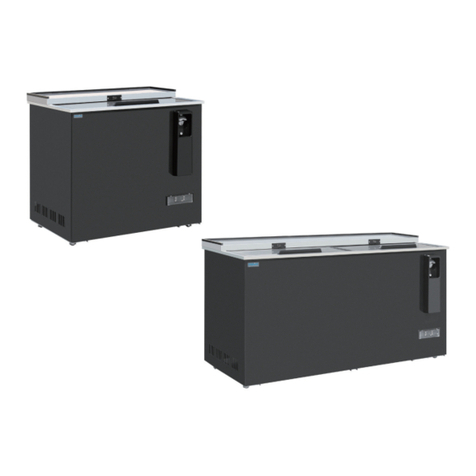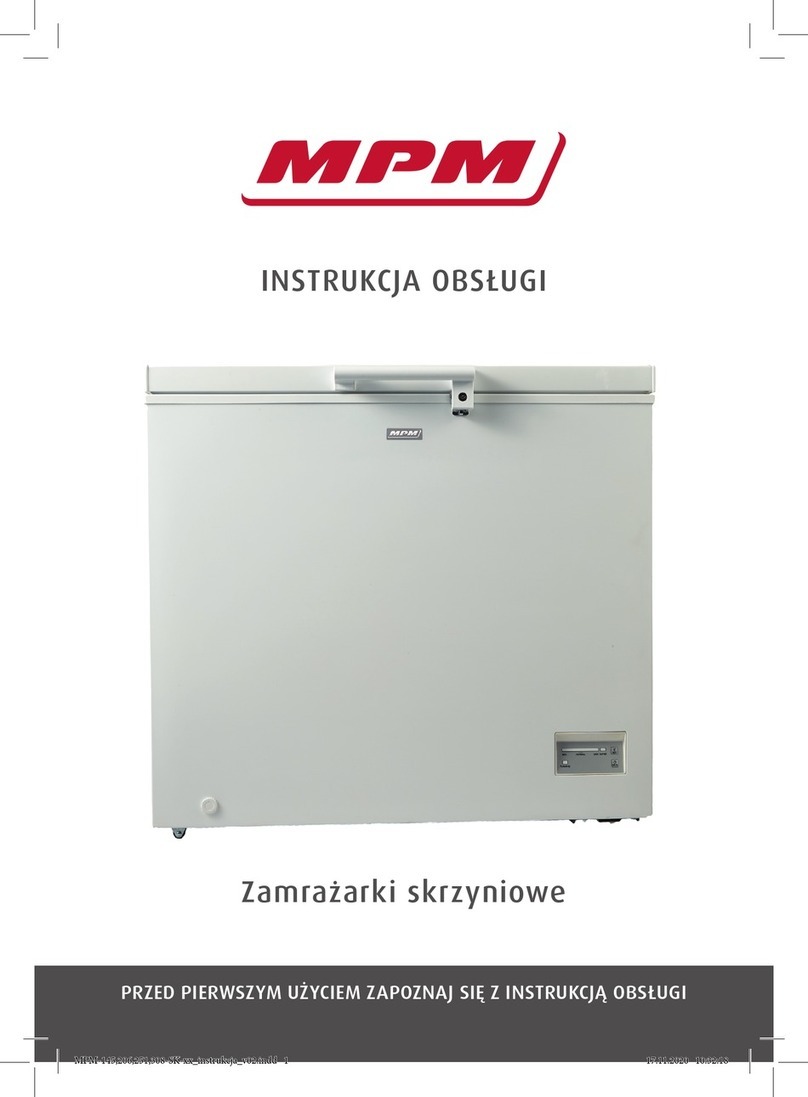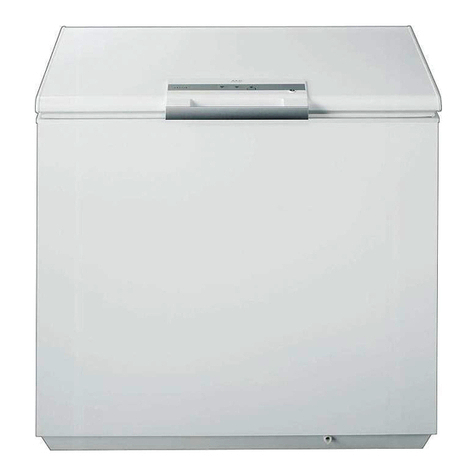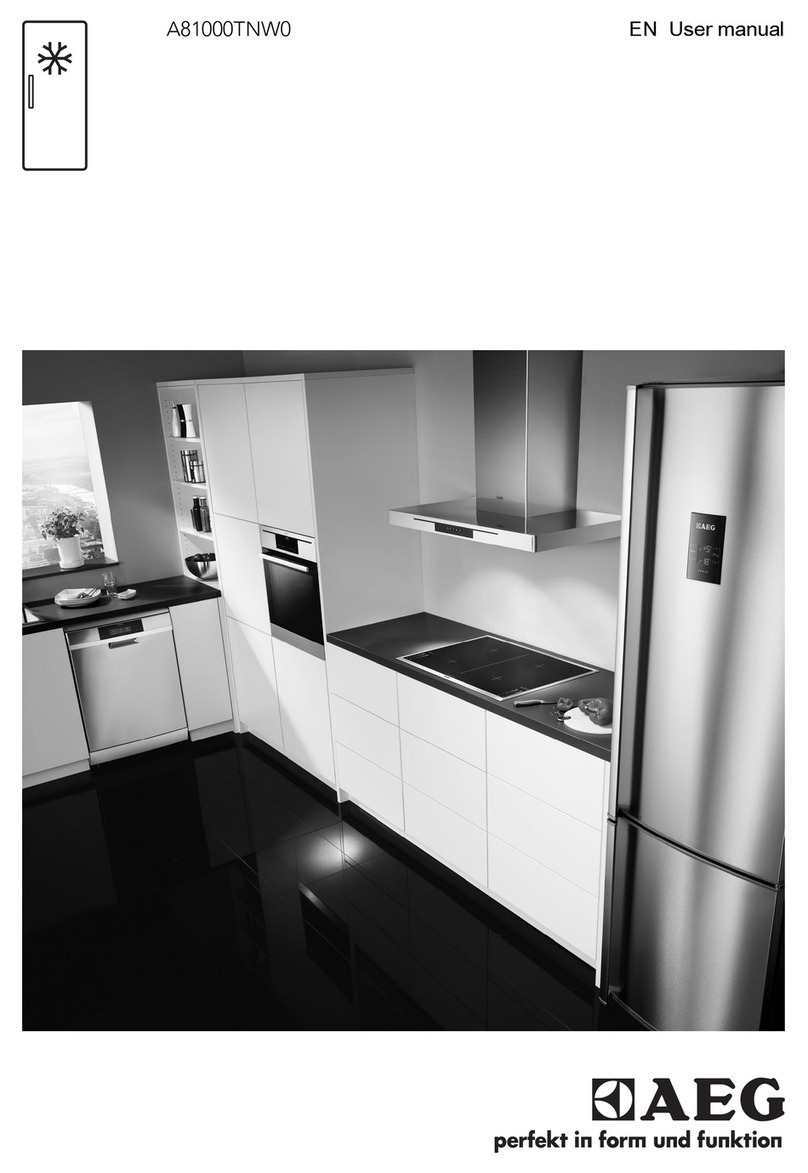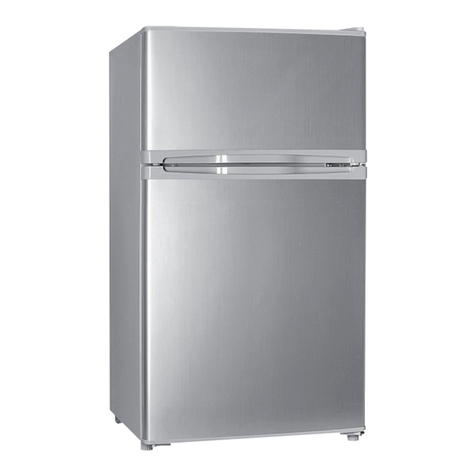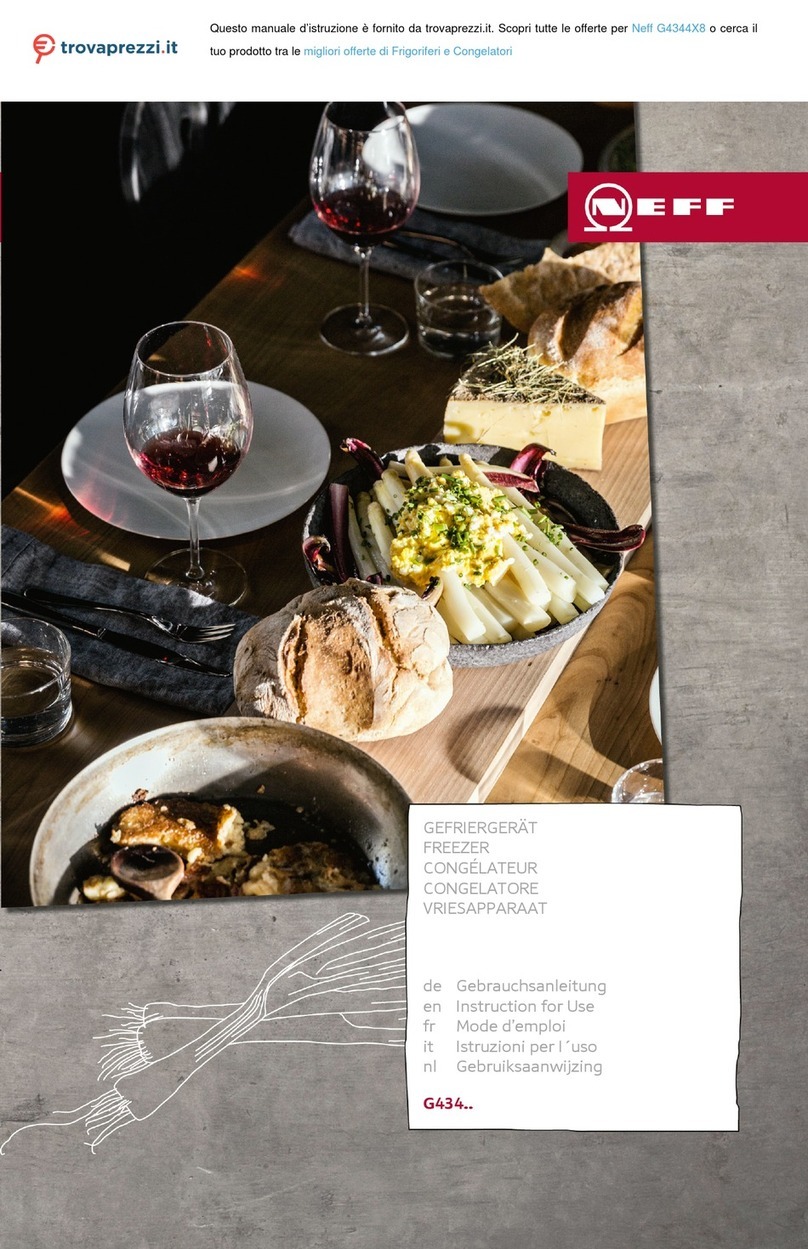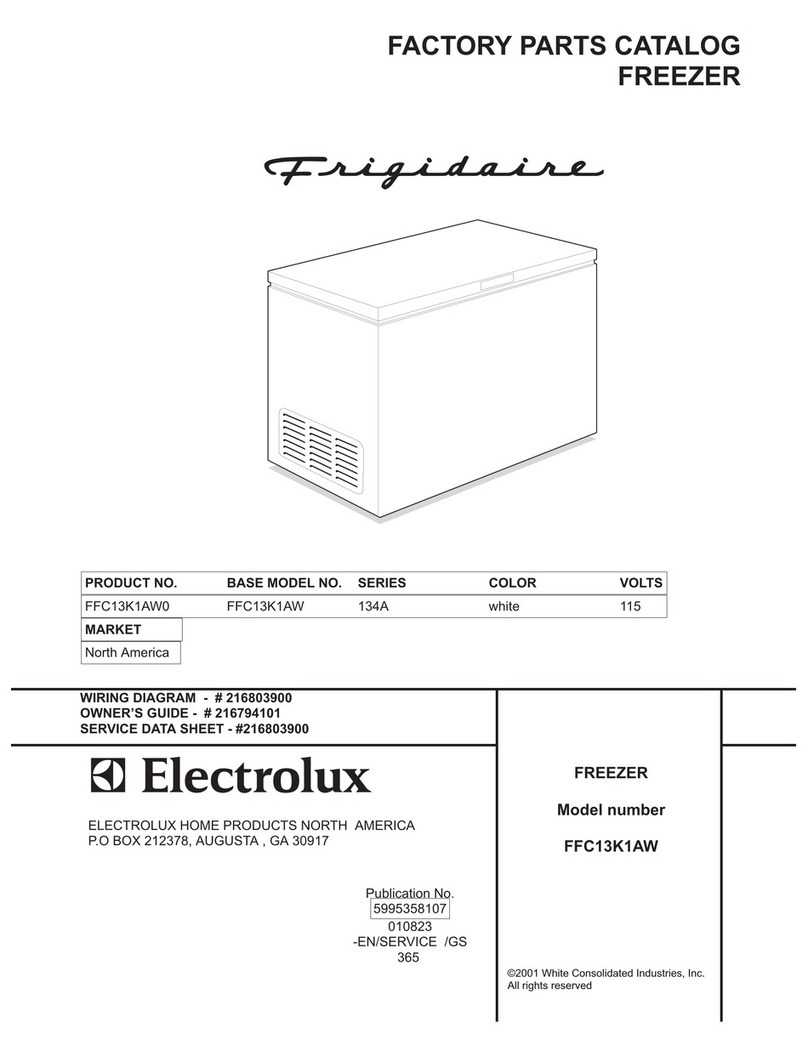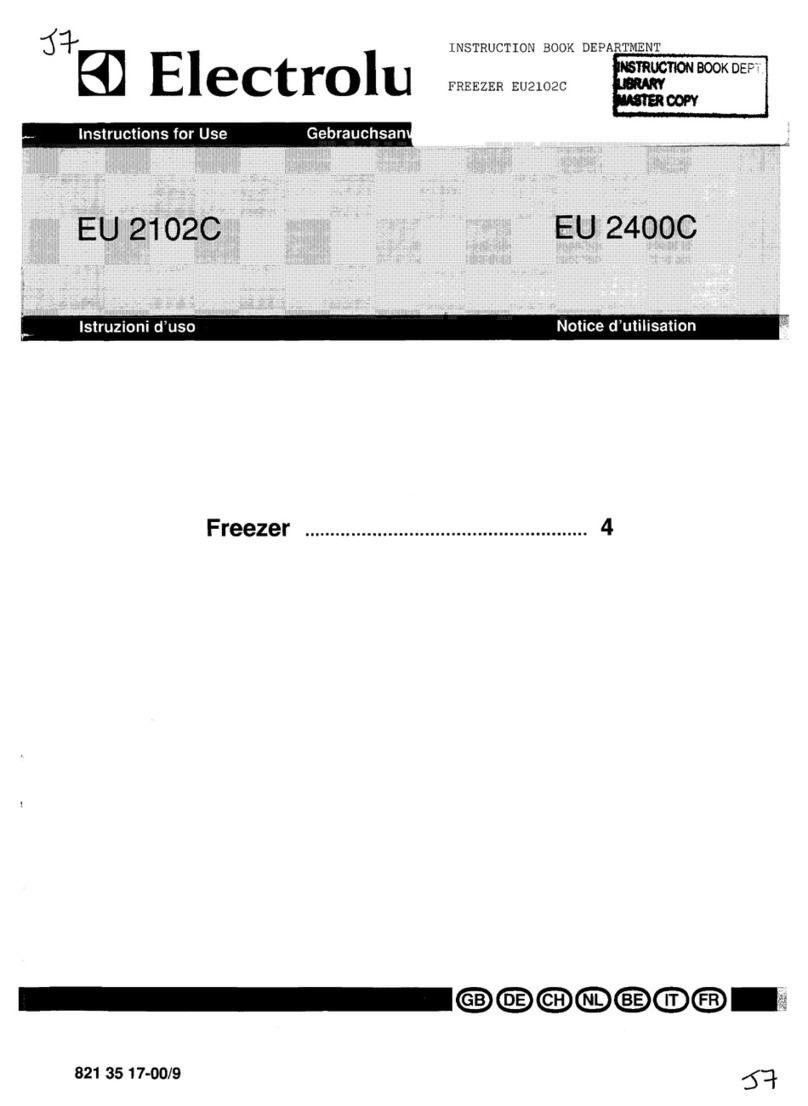142541
•Before connecting the appliance read these
instructions carefully. They describe the appliance
and provide instructions for its safe and correct
use. The instructions are prepared for different
types and models of the appliance so they may
contain descriptions of functions and components
your appliance may not have.
Instructions also contain the NO FROST freezer
version, with integrated fan and automatic defrost.
•Remove the wrapping protecting the appliance
during transport. Door corners are tted with
protective spacers. Remove the spacers and
replace them with the attached pegs.
•Before connecting the appliance to the mains
supply, leave it in upright position for about 2
hours. This will reduce possibility of malfunctions
in the cooling system resulting from prior transport
and handling.
•The appliance must be connected to the
mains supply in accordance with the standing
regulations and local requirements.
•The appliance must not be used in open air or
exposed to weather precipitation.
•Always disconnect the appliance from power
supply (pull the power cord from wall socket)
before cleaning and before replacing the light
bulb.
•If the power supply cord is damaged, in order to
avoid hazard it must be replaced by the service or
by qualied personnel.
•In case of long periods not using the appliance,
turn the appliance off with the ON/OFF button
and disconnect it from mains supply. Empty the
appliance, clean the interior and leave the door
ajar.
•For the protection of environment, please contact
local Borough or Council for authorised removal.
•Wrappings contain environmentally friendly
materials which can be recycled, recovered or
disposed without threat to the environment.
3
Before rst operation


